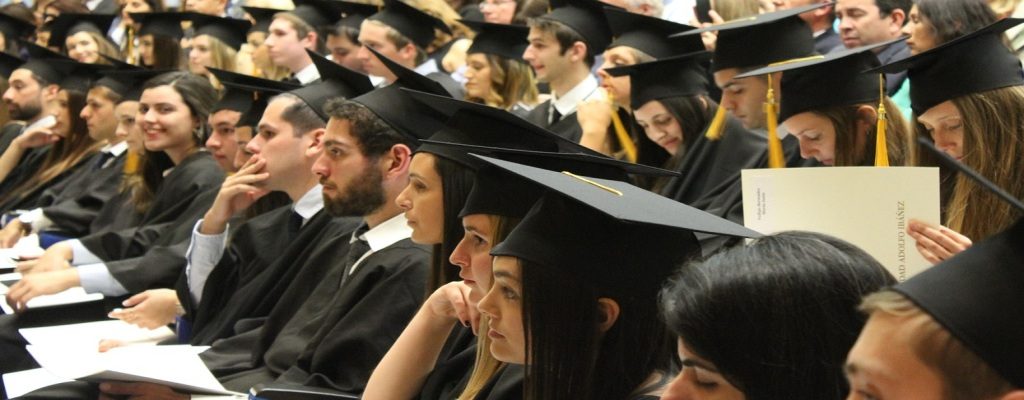This report explores how Turkish energy companies can strategically expand...
Read MoreYasin Bilgehan Akalan
Attorney at Law
Selen Esen
Paralegal
Yasin Bilgehan Akalan Selen Esen
Attorney at Law Paralegal
Immigration Law Expert – Akalan Law Firm Immigration Law Expert – Akalan Law Firm
Status of Immigration Visa: What Every Immigrant Visa Applicant Needs to Know
If you’re planning to live in the United States permanently and are exploring your visa options, understanding the status of immigration visa categories is an essential first step. Whether you’re applying through family sponsorship, employment, education, or humanitarian grounds, knowing the process and your rights under an immigrant visa is crucial.
This guide is specifically tailored for individuals who want to obtain an American visa. It introduces the main types of immigrant and nonimmigrant visas, explains who may apply, and outlines the steps you need to take—whether you’re aiming for a Green Card, a family-based visa, a fiancé(e) visa, or a humanitarian status. As you read further, you’ll learn what to expect in terms of eligibility, paperwork, interview preparation, and timelines. By the end of this article, you’ll be equipped with the essential knowledge needed to navigate the U.S. immigration system more confidently and effectively.

The protection of family unity is one of the core principles of the U.S. immigration system. Therefore, U.S. citizens and lawful permanent residents (Green Card holders) may apply for immigrant visas for certain family members. These visas grant the beneficiary the right to obtain a Green Card. Family-based immigrant visas are divided into two main groups: Immediate Relative (IR) visas and Family Preference (F) visas.
Immediate Relative visas include the spouses, unmarried children under 21, and parents of U.S. citizens and are not subject to annual numerical caps. In contrast, Family Preference visas apply to more distant relatives (e.g., married children, siblings) of U.S. citizens and to the spouses and unmarried children of Green Card holders; since these categories are subject to annual numerical limits, the visa wait times can be significantly longer.
1️⃣Immediate Relative Visas (IR)
This category includes the closest relatives of U.S. citizens and is not subject to numerical limitations, which means the process typically proceeds more quickly compared to other family categories. IR visas include:
2️⃣Family Preference Visas (F)
The Family Preference category includes more distant family members and is subject to annual visa caps. Therefore, waiting times may vary depending on the availability of visas in each category. The following subcategories are available:
Application and Procedure
Family-based immigrant visa applications follow a two-stage process:
Step One – Immigrant Petition (Form I-130):
The U.S.-based sponsor submits Form I-130 (Petition for Alien Relative) to U.S. Citizenship and Immigration Services (USCIS) on behalf of the foreign relative. Documentary evidence proving the family relationship must accompany the petition.
Step Two – Visa Processing or Adjustment of Status:
The process may require additional documentation, biometric data, medical examinations, and financial sponsorship via Form I-864 (Affidavit of Support), all of which are critical to the petition’s validity and approval.

☑️K Visas (Fiancé(e) and Spouse Visas – K-1 and K-3)
☑️K Visas (Fiancé(e) and Spouse Visas – K-1 and K-3)
K visas are technically classified as nonimmigrant visas but are processed within the framework of family-based immigration. These special visa types allow U.S. citizens and their foreign fiancés or spouses to reunite in the U.S. before completing the full immigration process.
1️⃣K-1 Visa (Fiancé(e) Visa)
The K-1 visa permits a foreign national who is engaged to a U.S. citizen to enter the United States lawfully and marry the citizen within 90 days of arrival. This visa category is only available to U.S. citizens; lawful permanent residents (Green Card holders) are not eligible to petition for K-1 visas.
After a valid marriage is concluded within the 90-day period, the foreign spouse may apply for Adjustment of Status through Form I-485 in order to obtain lawful permanent resident status (Green Card). Although technically nonimmigrant, the K-1 visa is designed with the intention of leading to immigration.
2️⃣K-3 Visa (Spouse of U.S. Citizen)
The K-3 visa was designed to allow a foreign spouse of a U.S. citizen to enter the United States while the Form I-130 (Petition for Alien Relative) is still pending with USCIS. This visa allows the spouse to wait inside the U.S. rather than abroad.
However, in practice, Form I-130 is often approved faster than the K-3 visa process, and as a result, the K-3 visa is rarely used today and is frequently rendered moot.

☑️Student and Exchange Visitor Visas (F-1, M-1, J-1)
☑️Student and Exchange Visitor Visas (F-1, M-1, J-1)
The United States offers various temporary (nonimmigrant) visa types for foreign nationals who wish to study or participate in cultural exchange programs. The most commonly used visa types in this category are F-1, M-1, and J-1. Each visa type is tailored to a specific form of educational or exchange participation and does not, in principle, serve immigrant purposes.
All of these visas are temporary in nature, and applicants must demonstrate that they intend to depart the United States upon completion of their studies or programs.
To apply for a student or exchange visa, the applicant must first be accepted by a U.S. institution or sponsor organization. Once accepted, the school or program sponsor provides a SEVIS-registered confirmation document:
With this document, the applicant completes the online visa application (Form DS-160) and attends a visa interview at the nearest U.S. Embassy or Consulate. During the interview, the applicant must demonstrate their ability to financially support their education and provide evidence that they intend to return to their home country after completion.
The duration of stay under these visas is generally tied to the length of the program. In order to maintain lawful status, students and exchange visitors must comply with full-time enrollment requirements.
The work and stay rights of J-1 visa holders vary by program category. Some J-1 categories are subject to the two-year home residency requirement, which requires participants to return to their home country for at least two years following the program before applying for certain U.S. visas (INA § 212(e)).
In general, these visas do not confer immigration intent, but some individuals may later obtain job offers and transition to work visas, or ultimately apply for permanent residence (Green Card) through other means.

☑️Diversity Immigrant Visa Lottery (Green Card Lottery)
☑️Diversity Immigrant Visa Lottery (Green Card Lottery)
The Diversity Visa (DV) Program, established under Section 203(c) of the Immigration and Nationality Act (INA), is a lottery system that grants lawful permanent resident status (Green Card) to individuals from countries with historically low rates of immigration to the United States.
The program is administered by the U.S. Department of State and allocates approximately 50,000 immigrant visas worldwide each year.
Purpose and Eligibility
The goal of the Diversity Visa Program is to promote demographic diversity in U.S. immigration. Citizens of countries that have sent large numbers of immigrants to the U.S. in recent years are not eligible to participate. The list of eligible countries is updated and published annually by the Department of State.
To qualify for the DV Lottery, applicants must meet two basic eligibility criteria:

The applicant must be a native of a country that is eligible for the DV program in the given year. If the applicant was born in an ineligible country, they may claim chargeability based on the country of birth of a spouse or parent (according to the “country of chargeability” rule).

The applicant must either:
Application Process
Selection and Post-Selection Process
Note: The number of selected applicants each year exceeds the number of visas available, so timely action and complete documentation are essential.

☑️Humanitarian-Based Visas and Statuses (Refugee, Asylum, U, T)
☑️Humanitarian-Based Visas and Statuses (Refugee, Asylum, U, T)
The United States provides various forms of humanitarian protection for individuals who face persecution or serious danger in their home countries. These include refugee and asylum status, among others.
Refugees are granted work authorization immediately upon resettlement in the U.S. and may apply for lawful permanent residence (Green Card) approximately one year after arrival.
Asylees (individuals granted asylum) are also entitled to live and work indefinitely in the U.S. and may apply for a Green Card after one year. They may also petition to bring their spouse and unmarried children under age 21 to the United States through family reunification.
Asylum applications must, as a general rule, be submitted within one year of the applicant’s entry into the U.S.; applications filed after this deadline are only accepted under exceptional circumstances.
In addition to refugee and asylum protections, the U.S. offers special humanitarian visas for immigrant victims of serious crimes:
When applying for these visas, applicants generally must obtain a certification from a law enforcement or prosecutorial agency (for example, Form I-918, Supplement B for U visas) confirming their cooperation with the authorities.
Individuals granted U or T visas receive temporary legal status and work authorization in the U.S. After approximately three years in this status, they may apply for lawful permanent residence (Green Card) if other eligibility criteria are met.

☑️CONCLUSION
☑️CONCLUSION
U.S. immigration visas consist of a wide range of categories that allow individuals to legally enter the country for various reasons such as family reunification, education, humanitarian protection, or the diversity lottery. Family-based visas provide permanent residency, while student, fiancé(e), or exchange program visas offer temporary status. Refugee and asylum applications offer humanitarian protection for individuals facing persecution. Additionally, immigration opportunities can be obtained through means such as the Green Card lottery. Each category is processed according to specific requirements and documentation.
DO YOU WANT TO LEARN MORE ABOUT GREEN CARD? THIS IS COMPREHENSIVE GUIDE
Adjustment of Status is the process that allows someone already in the United States to apply for lawful permanent residence (Green Card) without having to return to their home country for visa processing. It is done by filing Form I-485.
Required documents include Form I-485, biometric data, medical examination report, Form I-864 (Affidavit of Support), identification documents, and immigration history records.
Individuals who are physically present in the U.S., entered legally, and have a current visa category may apply for Adjustment of Status if they are eligible.
Yes. A person who enters on a K-1 visa must marry the U.S. citizen sponsor within 90 days of arrival and can then file Form I-485 to adjust their status to permanent resident.
Yes. Applicants can file Form I-765 (Application for Employment Authorization) along with Form I-485. Once approved, they are authorized to work in the U.S. while their Green Card application is pending.
The Immediate Relative visa is for the closest family members of U.S. citizens—spouses, unmarried children under 21, and parents. These visas are not subject to annual caps, so they are typically processed faster than other family-based categories.
First, the U.S. citizen submits Form I-130 to USCIS. Once it is approved, if the relative is outside the U.S., consular processing follows. If they are inside the U.S., they may apply for Adjustment of Status using Form I-485.
U.S. citizens can petition for their spouse (IR1/CR1), unmarried children under 21 (IR2), and their parents (IR5), provided the petitioner is at least 21 years old.
Since Immediate Relative visas are not subject to annual limits, they are generally processed faster than Family Preference categories. However, exact wait times vary depending on case volume.
A U.S. citizen may sponsor additional qualifying relatives at any time, as long as they meet eligibility requirements for each petition (e.g., a spouse, child, or parent).
This report explores how Turkish energy companies can strategically expand...
Read MoreCompanies often underestimate the strict limits of the B1 Visa,...
Read MoreAn H-1B denial can feel like the end of your...
Read MoreThe article examines how the recent Afghan asylum incident has...
Read MoreAkalan Law Firm, PLLC
All Rights Reserved © 2024